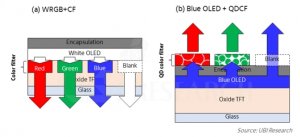Just read this that Samsung will be discontinuing all manufacturing of liquid crystal display (LCD) panels in South Korea and China by the end of this year. Stated they will switch to Quantum Dot screens but that currently uses LCD panel behind the quantum dot layer. Reading further its states that future quantum dot screens will be OLED rather than LCD. This should make things very interesting in the market.
Last edited:
![[H]ard|Forum](/styles/hardforum/xenforo/logo_dark.png)

